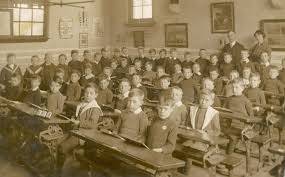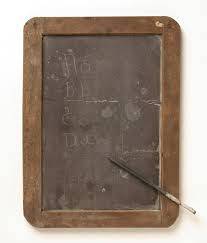At the start of Victorian times, not all children went to school, especially if you were a poor girl of the time, you would have very little chance of getting an education.
The people that went to school came mainly from families that could afford it, and usually only if you were a boy. If you did come from a rich family, you would probably be sent off to a boarding school. All of the other children of the time were expected to work so they could make money for their families.
As the Victorian era progressed, more and more people began to go to school, as more schools were built and fees became cheaper. In 1880, by law, all children had to at least go to primary school.

School in this time was very strict, nothing like it is now. There could be up to 80 people in a class with only one teacher, to save money. They were not taught as we were either, their learning consisted mainly of copying and repeating until the information was fixed in their brain and they could recite something perfectly.
Lessons
The three main subjects taught were simply reading, writing and arithmetic, as these were seen as the most important. They were taught on a daily basis.
Occasionally the girls could attend a sewing lesson, or there would be a class on geography or history. When the teacher felt like her pupils needed some exercise, they had to perform some 'drills' next to their desk in the classroom!
School Day
A day would usually be longer for a Victorian child, as a school day would run between 9am to 5pm, although they would have a long lunch break in between.
Apparatus
Instead of the apparatus we use today, Victorian children would use an abacus instead of a calculator, and slate instead of paper.
